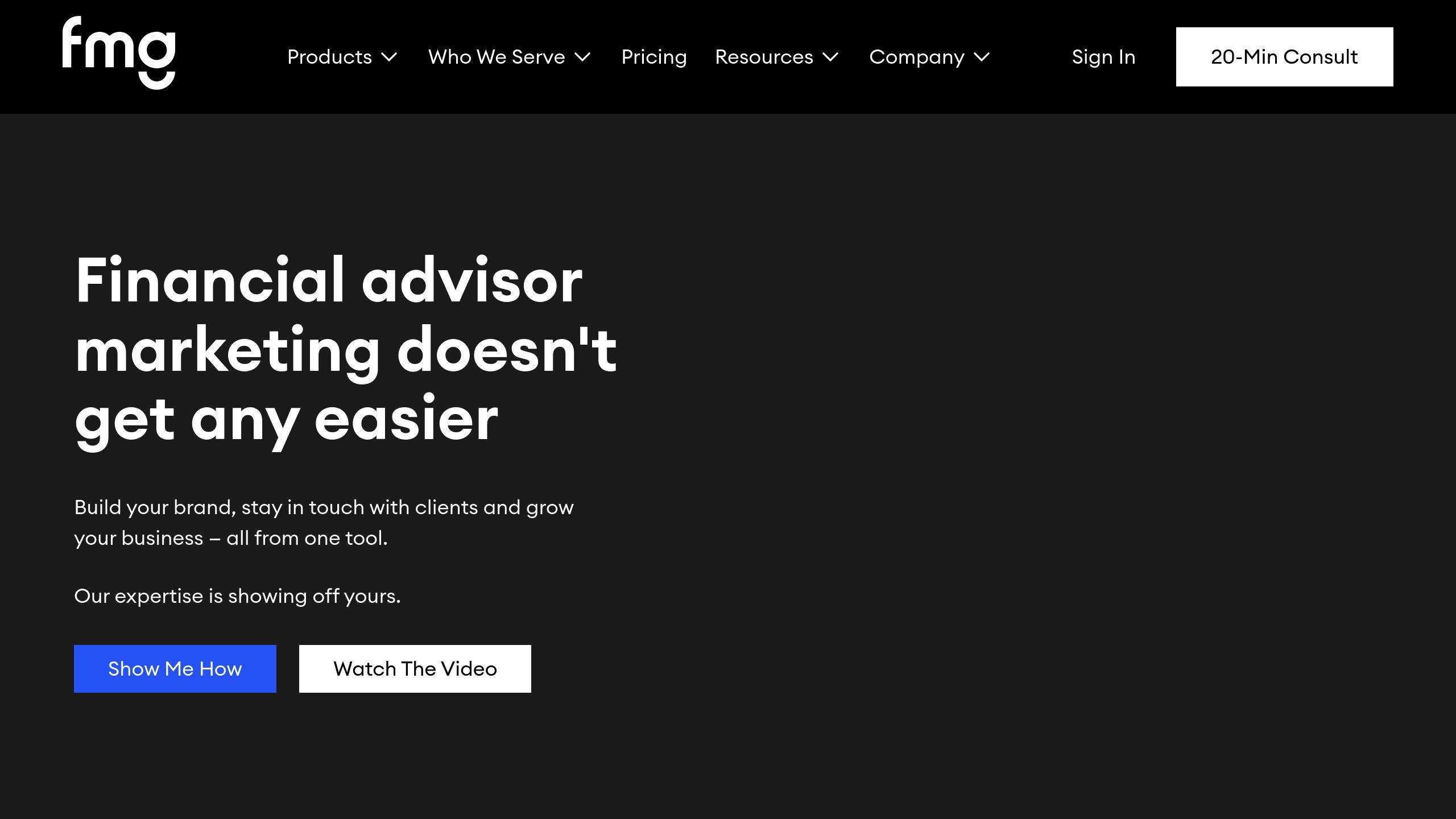Social media compliance is essential for financial advisors to avoid fines, protect reputations, and maintain trust. Regulators like the SEC and FINRA enforce strict rules that advisors must follow when using platforms like LinkedIn, Twitter, or Facebook. Here's what you need to know:
- Key Rules: Avoid false claims, disclose affiliations, and archive all posts for at least five years (SEC Rule 204-2).
- Best Practices: Write clear social media policies, pre-approve content, and train employees on compliance.
- Tools: Use AI-powered software for content review, archiving, and monitoring to simplify compliance tasks.
- Security: Protect accounts with two-factor authentication and limit access to authorized users.
Key Rules and Standards for Social Media Compliance
Regulatory Agencies and Their Responsibilities
FINRA monitors broker-dealers to ensure their communications are fair and balanced, while the SEC oversees both broker-dealers and RIAs, emphasizing transparency and banning misleading information. Knowing which agency's rules apply to your work is essential, as the requirements differ depending on your registration status [1][2].
Main Compliance Standards for Social Media
Social media compliance for financial advisors revolves around being transparent and protecting clients. Below are the key requirements to keep in mind:
| Requirement Category | Key Standards |
|---|---|
| Content Integrity | Avoid false claims, exaggerated statements, or unsupported performance predictions |
| Communication Style | Use fair messaging, include full disclosures, and tailor content to the audience |
| Disclosure Requirements | Clearly state affiliations, provide necessary disclosures, and obtain consent for email lists |
All forms of social media communication - whether written posts, comments, images, or videos - must be archived for at least five years under SEC Rule 204-2 [1].
Advisors should avoid linking to misleading third-party content and ensure all business-related posts are reviewed and archived [1][2]. Firms are encouraged to create clear boundaries between personal and business social media accounts to reduce the risk of accidental violations [1].
To stay compliant, firms should establish detailed policies and use tools designed to monitor and archive social media activity. Many firms are now turning to AI-powered software to flag potential compliance issues and maintain thorough records [1].
Steps to Create a Compliant Social Media Plan
Creating a social media plan that aligns with regulations means combining engaging content with strict adherence to rules that safeguard both your business and your clients.
Writing a Social Media Policy
A clear social media policy lays the groundwork for compliant practices. It should outline what is acceptable, how content is approved, and the roles employees play in both business and personal contexts. Here’s what to include:
| Policy Component | Key Details |
|---|---|
| Content Guidelines | Define allowed topics, banned content, and necessary disclosures. |
| Approval Process | Outline review steps, who’s responsible, and how to document approvals. |
| Account Management | Specify who can access accounts, their roles, and security protocols. |
| Personal Use Rules | Clarify boundaries between personal and professional social media use. |
Once your policy is in place, focus on content approval and maintaining proper records.
Approving Content and Keeping Records
Pre-approving content and keeping detailed records are critical for staying compliant. For example, SEC Rule 204-2 requires businesses to archive social media posts for at least five years. Tools designed for compliance can help by:
- Highlighting potential compliance issues.
- Streamlining the approval process.
- Automatically archiving posts and interactions.
- Logging changes and tracking account activity.
These tools make it easier to manage content while staying within regulatory boundaries. However, compliance doesn’t stop there - training your team is just as important.
Training and Monitoring Employees
Regular employee training and consistent monitoring are essential to ensure compliance. Keeping your team informed and vigilant helps prevent issues before they arise. Key steps include:
- Educating staff on current regulations and compliance expectations.
- Addressing possible violations promptly to avoid escalation.
- Conducting routine audits and keeping detailed records of findings.
Tips for Staying Compliant While Using Social Media
Sharing the Right Types of Content
When posting on social media, it's important to engage your audience while staying within compliance rules. Here's a quick guide to different content types and how to manage them:
| Content Type | Guidelines |
|---|---|
| Educational Posts | Focus on market insights and financial concepts, but avoid specific investment advice. |
| Industry News | Share links from reliable sources, include proper attribution, and add necessary disclaimers. |
| Client Stories | Always get written consent before sharing and steer clear of making performance guarantees. |
Meeting Recordkeeping Requirements
The SEC mandates that advisors keep detailed records of all social media activities - this includes posts, messages, and any third-party content - for at least five years. To stay organized, use automated tools to archive and monitor your social media actions. These tools can also help you document approvals and any edits, keeping everything in line with compliance standards.
Securing Social Media Accounts
Protecting your social media accounts is critical to avoid breaches and compliance issues. Here’s how you can enhance security:
- Restrict access to accounts to only those who are authorized.
- Enable two-factor authentication for an extra layer of protection.
- Regularly conduct security audits to identify and fix vulnerabilities. Be sure to document these measures for compliance purposes.
Staying compliant on social media isn’t just about following regulations - it’s about earning and maintaining trust with your clients. Collaborate with your compliance team to ensure your social media efforts meet the latest rules and guidelines. And with the right tools, managing compliance can become a much smoother process.
sbb-itb-e3190ce
Tools and Resources to Help with Social Media Compliance
Software for Social Media Compliance
Managing compliance on social media can be much easier with the right software. Here's a quick look at the key features to consider:
| Feature Category | Key Capabilities | Why It Matters |
|---|---|---|
| Content Review | AI scanning and approval workflows | Helps avoid posting non-compliant content |
| Archiving | Automated archiving and secure storage | Ensures records are kept for the required period (e.g., SEC regulations) |
| Monitoring | Real-time alerts and activity tracking | Quickly flags potential compliance issues |
| Security | Two-factor authentication and audit trails | Guards against unauthorized access |
Look for software that fits seamlessly into your existing processes. Top solutions often include automated tools to review posts for problematic language and ensure proper documentation is maintained.
"Financial advisors should work closely with their compliance teams to understand specific regulations that apply to their firm and industry. They should also ensure that software solutions are designed to meet these regulatory requirements." [1]
To get the most out of compliance tools, set up clear workflows, schedule regular audits, and train your team on how to use the software effectively.
Using Financial Advisor Marketing

Financial Advisor Marketing offers resources to help advisors expand their practice while staying within compliance guidelines. They provide a free list of 51 marketing tools tailored for financial advisors, combining compliance with effective marketing strategies.
These tools cover areas like:
- Content creation that adheres to regulations
- Social media management with compliance safeguards
- Documentation and archiving solutions
- Marketing automation tools designed with compliance in mind
When choosing tools from this list, focus on those with built-in compliance features to simplify your social media management. The right tools can help you maintain a professional online presence without risking regulatory issues.
Conclusion: Keeping Up with Social Media Compliance
Navigating social media compliance may seem daunting, but leveraging the right tools and strategies can make it manageable. Staying on top of compliance not only helps avoid regulatory issues but also strengthens client trust and credibility.
Firms with effective compliance systems often experience fewer regulatory hurdles and build stronger client relationships. To stay on track in 2024 and beyond, here are some key areas to focus on:
| Compliance Area | Key Action |
|---|---|
| Social Media Policy | Regularly document and update procedures |
| Content Review | Set up clear approval workflows |
| Records Management | Archive all communications properly |
| Team Training | Provide ongoing compliance education |
As social media platforms continue to evolve, keeping up with FINRA and SEC guidelines is critical. Financial advisors should aim to create content that is both educational and transparent while ensuring every social media activity is thoroughly documented [1][2].
While compliance tools can simplify many tasks, human oversight is still vital to meet regulatory standards [3]. The key is finding the right balance between engaging content and strict adherence to compliance rules.
"Financial advisors should work closely with their compliance teams to understand specific regulations that apply to their firm and industry. They should also ensure that software solutions are designed to meet these regulatory requirements" [1].
Even as advanced tools make daily compliance tasks easier, transparency and accuracy remain non-negotiable. With a solid compliance strategy in place, advisors can confidently navigate the challenges of social media while safeguarding their practice.
FAQs
What is the SEC social media policy?

The SEC permits sharing material information on social media, but only if investors are notified to look for it there. Advisors must ensure their content is clear, avoid potential conflicts with third-party material, and keep detailed records of all communications.
Here’s an overview of the key elements:
| Policy Element | Requirements |
|---|---|
| Material Information | Allowed on social media if investors are told to expect it there. |
| Content Engagement | Be cautious with third-party content to avoid unintentional endorsements. |
| Professional Connections | Steer clear of conflicts of interest when networking on social platforms. |
| Workflow Integration | Use archiving tools and review processes to meet compliance standards. |
Financial advisors should approach social media interactions with care. Transparency is crucial - avoid misleading statements, follow performance-related rules, and always include necessary disclosures.
Collaborating with compliance teams can clarify firm-specific guidelines. Tools designed for compliance can simplify the process and help ensure you meet regulatory standards [1][2].


